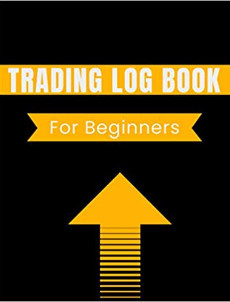New traders may be wondering “What is a leg in stock market?
In the financial world of stock and option investing, the term “leg” refers to one part of a trade.
Regarding the trading of equities (stocks), you could consider buying shares of a stock to be one “leg” of a trade, and when those shares are sold, that would be the second leg of the complete transaction.
The same could be said when trading options, namely, buying a call or put option could be considered the first leg, and closing the trade as the second leg.
Generally, though, these are considered to be simply “single-leg” positions.
Consider Reading: What Are Options in Trading and How Do They Work?
Two-Leg Positions
Positions having two or more legs are common among options traders.
Although there are only two types of options, calls and puts, and the only thing that can be done with them is to buy or sell them, combinations of options can create a wide variety of trading strategies which have many different objectives
Spread Trades
“Spread trades” are prime examples of two-log options strategies.
Spread trades, sometimes referred to as “vertical spreads,” can be less risky than simply buying or selling a call or put.
This makes them perfect for traders who have small trading accounts, as well as for beginning options traders.
A vertical spread trade consists of two legs, a “long” position (purchasing an option) and a “short” position (selling an option). There are four vertical spread configurations.

Great Gift: Trading Heartbeat T-Shirt
Call and Put Debit Spreads
A “call debit spread” is a bullish strategy, and is constructed by selling one call option and buying another call option at a lower strike price. Both have the same expiration date.
A “put debit spread” is a bearish strategy, and is constructed by purchasing one long put and one short that has a lower strike price.
Call and put debit spreads result in a net debit to the trader’s account, thus the name.
Call and Put Credit Spreads
A “put credit spread” is a neutral to bullish strategy, where the short strike price is placed above the long strike.
A call credit spread is a neutral to bearish strategy, and the long strike price is placed above the short strike price.
Credit spreads result in a net credit to the trader’s account once filled.
The Straddle Strategy
Another two-leg strategy is a “straddle,” where the simultaneous purchase of a put and a call have the same strike price.
The assumption here is that the price of the underlying asset (stock, ETF, etc.) will stay at or very close to the strike price during the life of the trade.
A “strangle” is another two-leg strategy, and is constructed by selling one call option at price above the current stock price and selling a put below the current stock price.
This strategy is used when the assumption is that the underlying stock will stay within a range defined by the two strike prices.
 Check Out Our “Trading Log Book for Beginners“
Check Out Our “Trading Log Book for Beginners“
Multi-Leg Strategies
Similar to two-leg strategies, an “iron condor” is an options position that has four legs.
Like a strangle, an iron condor is also used when the assumption is that a stock will trade within a given range during the life of the option.
Unlike a strangle, the iron condor position limits risk, whereas the strangle has unlimited risk.
Iron condors can be used by those who have small trading accounts, because of their defined risk.
Brokerages will require traders to have a lot of money in their accounts before they will allow undefined strangle trades due to the potential for the stock to move against the trader and incur a huge loss.
An iron condor is simply made up of two (2) two-legged vertical spread trades, a call spread and a put spread.
Consider Reading: Understanding Broken Wing Butterfly Options Trading
“Legging Into A Trade”
You may have heard traders use the term “leg into a trade.” This refers to another leg being added to an already existing trade.
This is in contrast to vertical spreads, strangles, straddles and iron condors, where all of the legs are executed simultaneously.
Regarding legging into a trade position, what starts out as a single leg trade can be turned into a spread or other strategy by adding another trade to form a more complex position.
This enables a trader to take advantage of changes in the market.
Conclusion: What Is a Leg in Stock Market?
Multi-leg option strategies may at first seem complex, but they are typically made up of simple orders.
Combining various option trades into more enhanced strategies gives traders a wide variety of strategies to choose from, enabling them to take advantage of many different market conditions and traders’ assumptions.
Check Out: What is GTC in the Stock Market?

